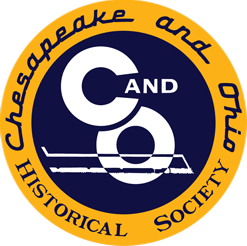

Original price was: $12.95.$9.95Current price is: $9.95.
C&O in Alderson, West Virginia
This is a small 50-page book dedicated to the history of the Chesapeake & Ohio Railway in the town of Alderson, W. Va. Alderson is located at Milepost 336 and the C&O’s main line Alleghany subdivision. The book is intended not only as a nostalgic remembrance of the C&O and the C&OHS’s original “hometown,” but also as an example of how railroads effected small towns in America. The book is printed to the same standards as other C&OHS books, but is saddle-stitched (has no spine lettering).
Alderson was created in the early 1870s as the C&O’s main line was built westward and became an important shipping point on the Alleghany Subdivision for agricultural products. It never had any industry and the population reached its height in 1930 at 1,400 people. Today, it is largely a residential community. Amtrak’s Cardinal stops on signal three days a week.
The wider context of this book helps to explain the theory that railroads were the “metropolitan corridor.” This means that even the smallest communities were linked by means of the railroad and telegraph to the outside world, making them part of the “American Metropolis.” Illustrations of this are that the citizens of Alderson could have a New York newspaper the day after it was published, fresh meat from Chicago in two days, and fruit from Florida, only days after being picked. Through the telegraph wires, communication was established to the entire country and world. This in effect, made the railroads the internet of the 19th century.
The book is authored by T. W. Dixon, Jr., founder of the C&OHS. The society’s publications were first issued from Alderson, and only in later years as it expanded was it moved to Clifton Forge, Va. This is a labor of love for him.
C&O in Alderson, West Virginia
This is a small 50-page book dedicated to the history of the Chesapeake & Ohio Railway in the town of Alderson, W. Va. Alderson is located at Milepost 336 and the C&O’s main line Alleghany subdivision. The book is intended not only as a nostalgic remembrance of the C&O and the C&OHS’s original “hometown,” but also as an example of how railroads effected small towns in America. The book is printed to the same standards as other C&OHS books, but is saddle-stitched (has no spine lettering).
Alderson was created in the early 1870s as the C&O’s main line was built westward and became an important shipping point on the Alleghany Subdivision for agricultural products. It never had any industry and the population reached its height in 1930 at 1,400 people. Today, it is largely a residential community. Amtrak’s Cardinal stops on signal three days a week.
The wider context of this book helps to explain the theory that railroads were the “metropolitan corridor.” This means that even the smallest communities were linked by means of the railroad and telegraph to the outside world, making them part of the “American Metropolis.” Illustrations of this are that the citizens of Alderson could have a New York newspaper the day after it was published, fresh meat from Chicago in two days, and fruit from Florida, only days after being picked. Through the telegraph wires, communication was established to the entire country and world. This in effect, made the railroads the internet of the 19th century.
The book is authored by T. W. Dixon, Jr., founder of the C&OHS. The society’s publications were first issued from Alderson, and only in later years as it expanded was it moved to Clifton Forge, Va. This is a labor of love for him.
